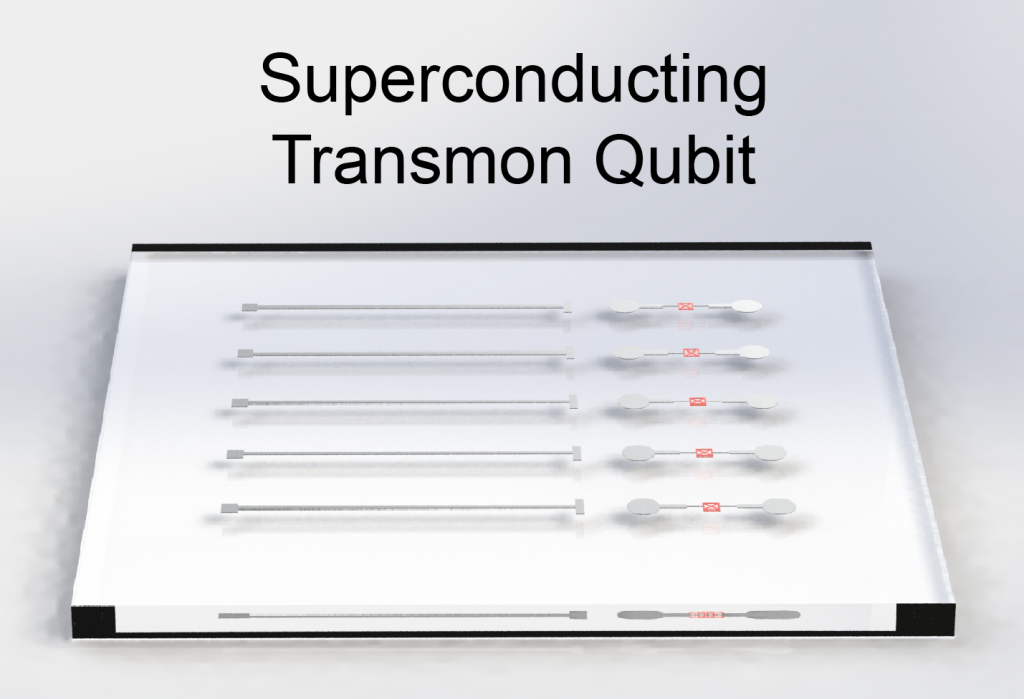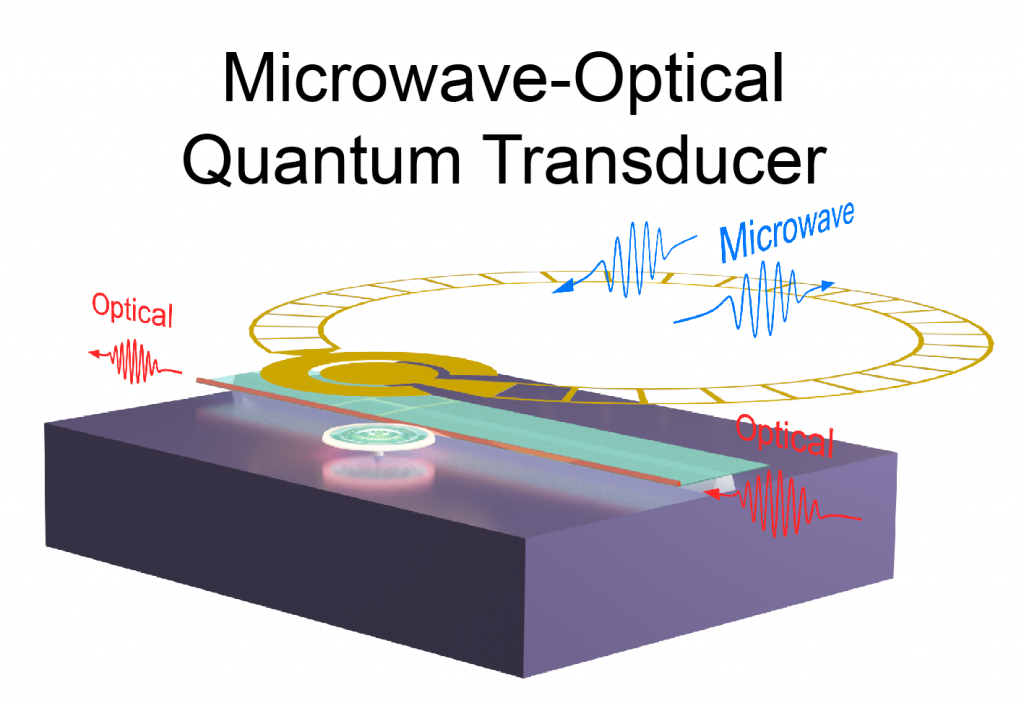Superconducting Devices
Our heterogeneous quantum network consists of not only qubits with optical transitions, but also microwave qubits operating at millikelvin temperatures. We aim to achieve this by taking advantage of our recent breakthrough development of superconducting quantum devices at the Center for Nanoscale Materials (CNM) at Argonne. We will leverage GHz qubit devices based on single electrons and superconducting transmons to create and receive microwave quantum communication signals.

As shown in Fig. 1, the electron qubits feature a unique design by trapping isolated single electrons on an ultraclean, low-noise solid neon surface to achieve a record long coherence time of ~100 µs with high-fidelity single-qubit gates (~99.97%) and high-fidelity single-qubit readout (~98.1%) [1,2].

State-of-the-art superconducting transmon qubits (Fig. 2) are also available to prepare and communicate microwave quantum states, hence expanding the scalability of our heterogeneous quantum network architecture. To interface microwave and optical qubits in our quantum network, we will harness integrated superconducting piezo-optomechanical (POM) quantum transducers (Fig. 3) that are being developed at CNM.

The transducers utilize high-frequency phonons to mediate strong interaction between microwave and telecom-band optical photons [3,4]. By engineering cavity-enhanced GHz piezomechanics, we aim to realize high-efficiency, low-noise photon conversion and entanglement between microwave and optical frequencies.
References
[1] X. Zhou, G. Koolstra, X. Zhang, G. Yang, X. Han, B. Dizdar, X. Li, R. Divan, W. Guo, K. W. Murch, D. I. Schuster, and D. Jin, Single electrons on solid neon as a solid-state qubit platform, Nature 605, 46 (2022)
[2] X. Zhou, X. Li, Q. Chen, G. Koolstra, G. Yang, B. Dizdar, Y. Huang, C. S. Wang, X. Han, X. Zhang, D. I. Schuster, and D. Jin, Electron charge qubits with 0.1 millisecond coherence time, Nat. Phys. (2023). https://doi.org/10.1038/s41567-023-02247-5
[3] X. Han, W. Fu, C. Zhong, C.-L. Zou, Y. Xu, A. A. Sayem, M. Xu, S. Wang, R. Cheng, L. Jiang, and H. X. Tang, Cavity piezo-mechanics for superconducting-nanophotonic quantum interface, Nat. Commun. 11, 3237 (2020)
[4] X. Han, W. Fu, C.-L. Zou, L. Jiang, and H. X. Tang, Microwave-optical quantum frequency conversion, Optica 8, 1050 (2021)
